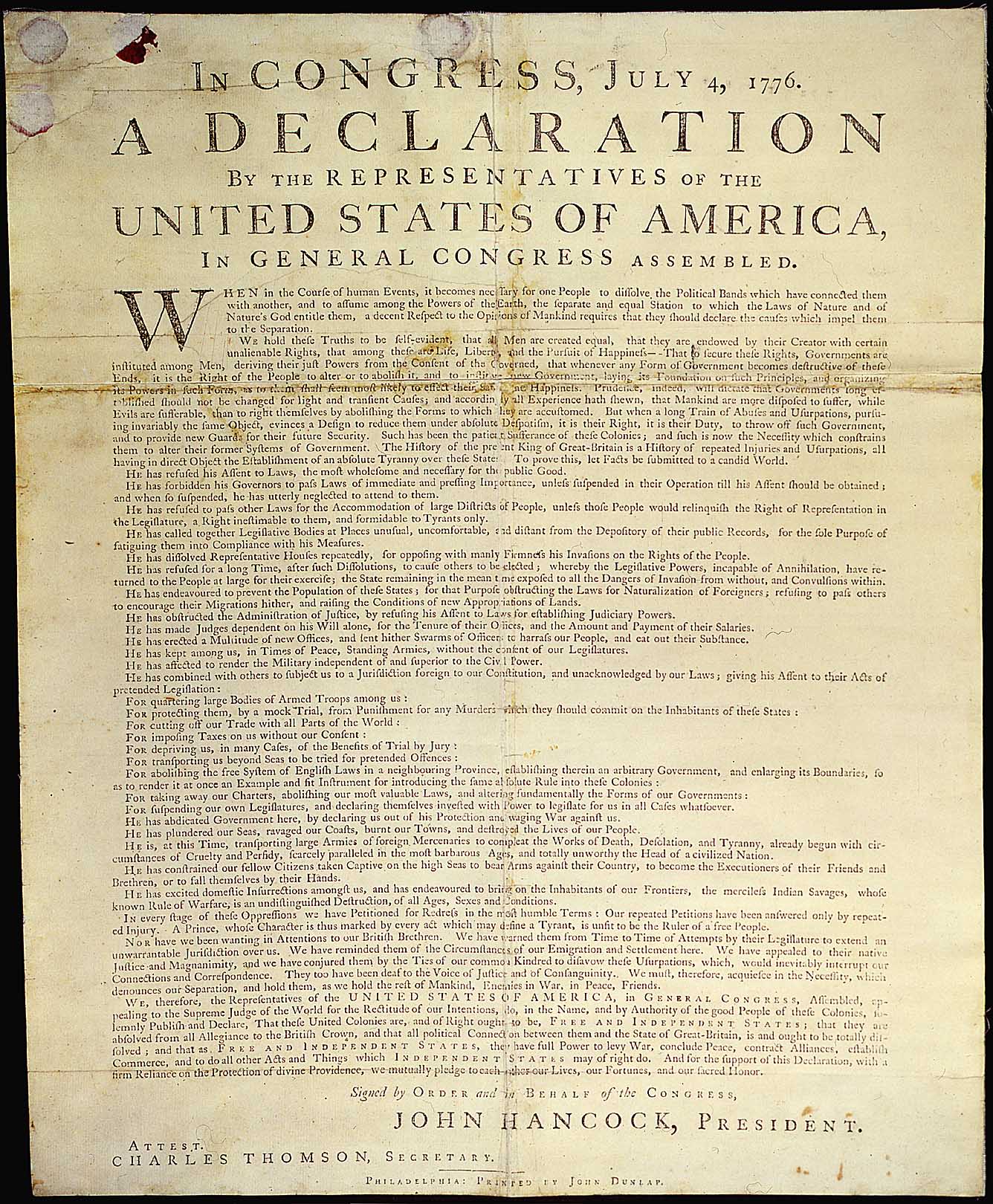

Among these fundamental natural rights, Locke said, are "life, liberty, and property.The unanimous Declaration of the thirteen united States of America, That is, rights that are God-given and can never be taken or even given away. Locke wrote that all individuals are equal in the sense that they are born with certain "inalienable" natural rights. Locke wrote his Second Treatise of Government in 1689 at the time of England's Glorious Revolution, which overthrew the rule of James II. Most scholars today believe that Jefferson derived the most famous ideas in the Declaration of Independence from the writings of English philosopher John Locke. In composing the declaration, Jefferson followed the format of the English Declaration of Rights, written after the Glorious Revolution of 1689. He also had read the statements of independence drafted by Virginia and other colonies as well as the writings of fellow revolutionaries like Tom Paine and George Mason.

In these two paragraphs, Jefferson developed some key ideas: "all men are created equal," "inalienable rights," "life, liberty, and the pursuit of happiness." Where did Jefferson get these ideas?Īs a man of the Enlightenment, Jefferson was well acquainted with British history and political philosophy. The members of the Continental Congress made only two minor changes in the opening paragraphs of Jefferson's draft declaration. That document would become known as the Declaration of Independence. Livingston of New York–to draft a formal statement justifying the break with Great Britain.

Before departing, however, the delegates also appointed a five-man committee–including Thomas Jefferson of Virginia, John Adams of Massachusetts, Roger Sherman of Connecticut, Benjamin Franklin of Pennsylvania and Robert R. Amid heated debate, Congress postponed the vote on Lee’s resolution and called a recess for several weeks. On June 7, the Virginia delegate Richard Henry Lee introduced a motion calling for the colonies’ independence before the Continental Congress when it met at the Pennsylvania State House (later Independence Hall) in Philadelphia. In March 1776, North Carolina’s revolutionary convention became the first to vote in favor of independence seven other colonies had followed suit by mid-May. That same month, the recent British immigrant Thomas Paine published “Common Sense,” in which he argued that independence was a “natural right” and the only possible course for the colonies the pamphlet sold more than 150,000 copies in its first few weeks in publication. News of his words reached America in January 1776, strengthening the radicals’ cause and leading many conservatives to abandon their hopes of reconciliation. In his message to Parliament in October 1775, King George III railed against the rebellious colonies and ordered the enlargement of the royal army and navy. Things changed over the course of the next year, however, as Britain attempted to crush the rebels with all the force of its great army. The Congress formally adopted the Declaration of Independence-written largely by Jefferson-in Philadelphia on July 4, a date now celebrated as the birth of American independence.Įven after the initial battles in the Revolutionary War broke out, few colonists desired complete independence from Great Britain, and those who did–like John Adams– were considered radical. In mid-June 1776, a five-man committee including Thomas Jefferson, John Adams and Benjamin Franklin was tasked with drafting a formal statement of the colonies’ intentions.
DECLARATION OF INDEPENDANCE FULL
By the following summer, with the Revolutionary War in full swing, the movement for independence from Britain had grown, and delegates of the Continental Congress were faced with a vote on the issue. When armed conflict between bands of American colonists and British soldiers began in April 1775, the Americans were ostensibly fighting only for their rights as subjects of the British crown. The Declaration of Independence was the first formal statement by a nation’s people asserting their right to choose their own government.


 0 kommentar(er)
0 kommentar(er)
